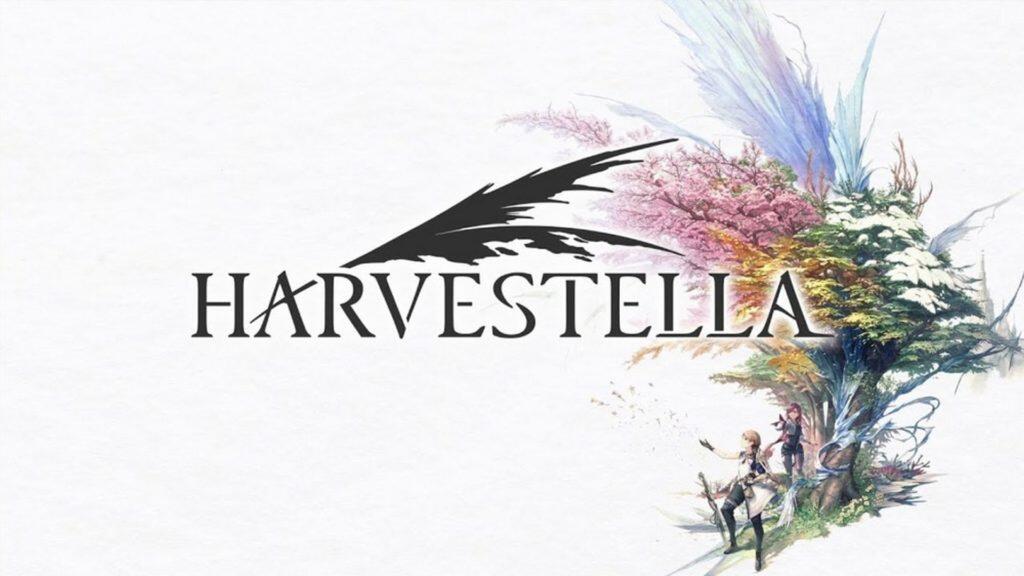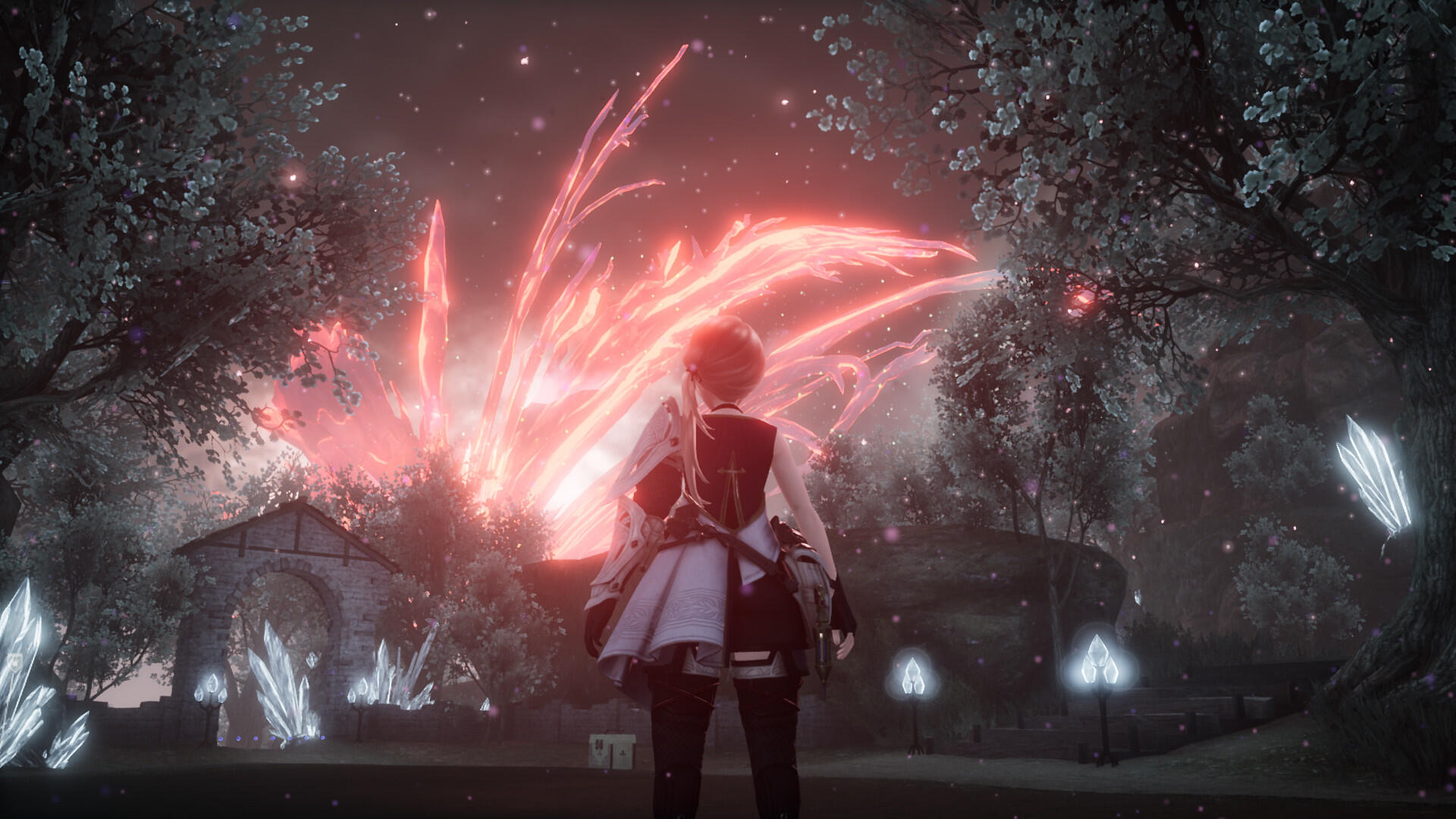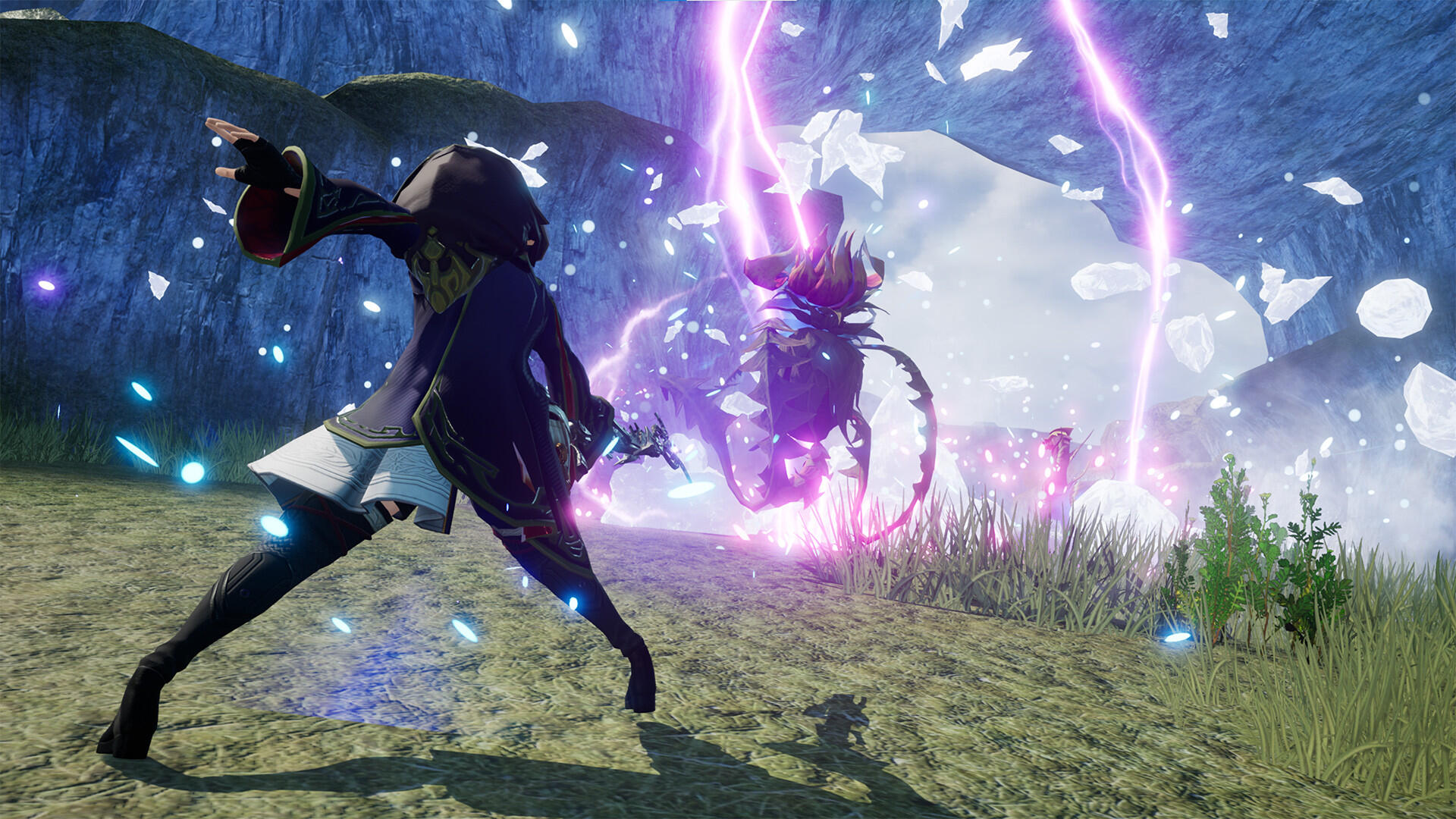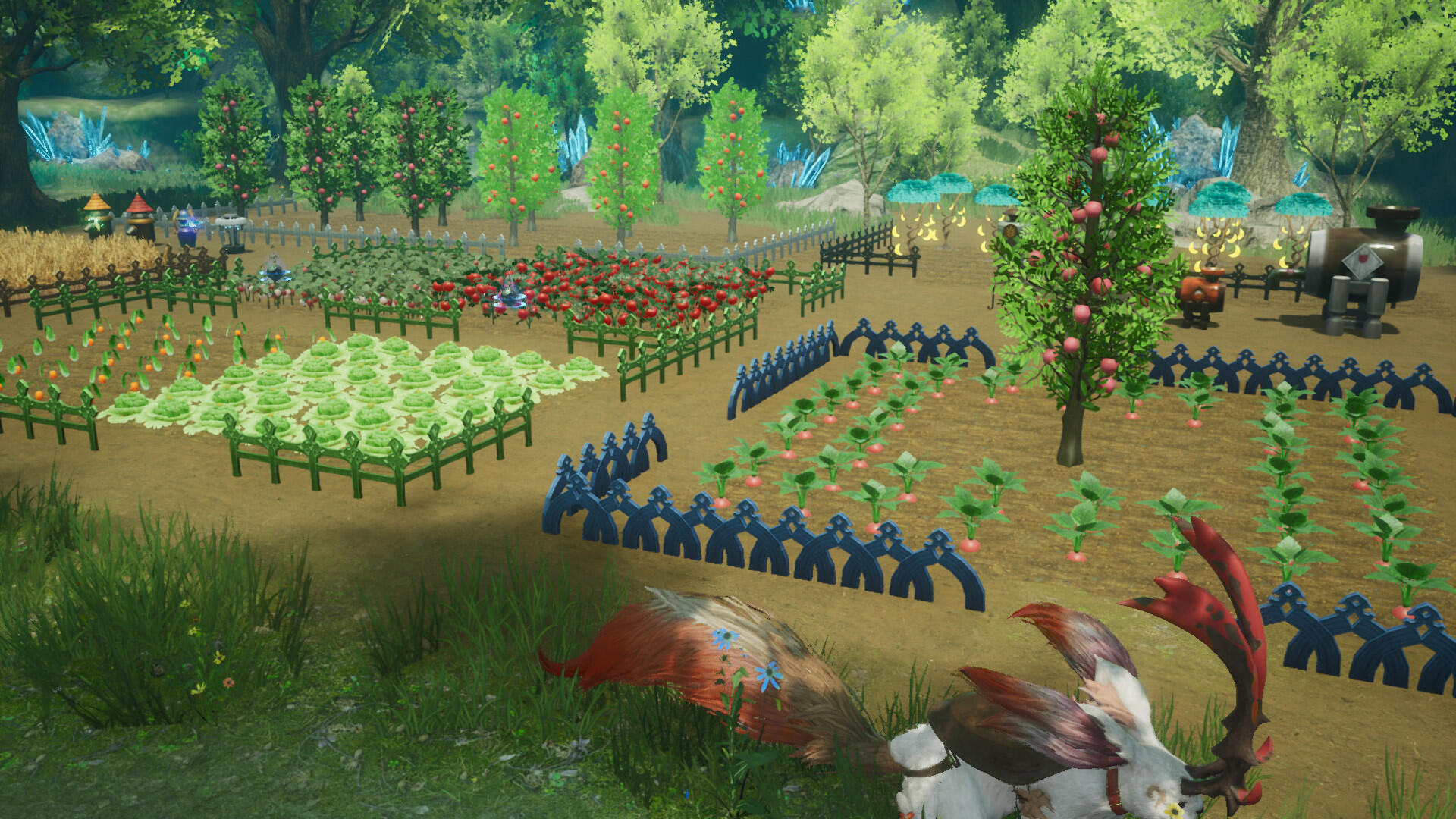
Eat up to beat up is the essence of the new Nintendo Switch title, Harvestella, from veteran JRPG publisher, Square Enix. The fusion of action RPG and the farm sim trend seems like a promising concept, but there’s definitely room to grow, as was my experience with Harvestella.
Your character awakens after a dreamlike interaction with a mysterious figure and begins with a tale as old as time – an amnesiac finding themselves in an unknown realm. Upon regaining consciousness, you’re soon told of an incoming threat, thus inheriting a farm and a quest to save the world. The looming calamity, Quietus, has caused strange things to occur to crystals, known as Seaslights, that influence the seasons. Saving the world from ruin and remembering who you are appears to be the basic gist of Harvestella, but with the passing of time, it seems more is at play.
Gameplay runs on a day-to-day system, where time management becomes a huge basis of progression, especially considering the 30-day cycle of seasons. The main elements of daily life include tending to crops, preparing for exploration, completing quests, and combat.
Early impressions were that the days felt way too fast to achieve anything, more or less reduced to learning the basics of farming and combat in days that clocked at 15-20 minutes in real-time. I had very little progression or interest in the game until day 22 when I was able to beat time constraints and actually pick up the pace of the game. It took me days to reach the next areas of the early valley and forest zones, where I had to overcome broken bridges, incomplete ladders, scarce checkpoints, and enemies in order to advance, and it wasn’t until chapter 3 that I felt able to wrangle time and really start my journey.

Farming felt like a chore with little reward, scraping up whatever funds I could earn from selling when I started out. I focused too heavily on trying to boost my profits by selling produce rather than on progression. Once I put my hard-earned cash toward repairing the kitchen counter and learning to fish, I could adventure further on a fuller stomach. Different seasons mean different produce, and without certain ingredients, a lot of recipes can’t be made unless the items are stored away. There’s a lot to consider in terms of farm management, from cultivating, livestock, upgrades, and making food, but they all feel less satisfying than I’d like.
Prioritisation is essential to success and eating a hearty meal is often crucial. Meals replace potions to replenish stamina and health, but they’re not readily accessible. Village inns and stores won’t provide takeaway, it all has to be homemade. This is where resource management becomes crucial but gathering ingredients is easier said than done. I struggled in early fights on an empty stomach. It wasn’t until later I stopped eating snacks of “carrops” and “cucumbles,” moving on to “Cucumble and Mince sandwiches” to fill the “stomach” meter that I was able to succeed with a massive stamina and health boost.
Combat is a real-time hack-and-slash action similar to other Square Enix titles. The class system, which includes 12 classes with 3 in loadout at a time to alternate from, is well-implemented and uses “job-points” to move through skills for each role. Party members come equipped with one of these skills and fight alongside you, and these classes are accessible to play with very satisfying movesets. However, the party members didn’t feel self-sufficient. I had little faith in their ability to cause damage, and rather, they took constant hits. While the player character can be decked out with defensive equipment, other party members aren’t able to wear gear, with the only exception being weapon levels bought from the Smithy. If I was able to tailor their defenses and offensive attacks, they would have felt more useful.

Enemies fall into conventional fantasy staples like goblins and slime creatures, each with their own weaknesses to exploit. I felt more vulnerable than I’d like in most circumstances due to how easy it was to take damage. There’s no dodging ability, but rather “rush” and “step,” which weren’t accessible until later in the game. These provided little help due to enemies being able to perform actions way too quickly to be telegraphed. Health was at constant fluctuations and I’d have to try to sneak in a snack during combat, which was slow, and unless you take a picnic, resulted in 50HP snacks that were just as quickly lost as chewed on.
There were some fairly significant JRPG elements that weren’t featured in the game which took away some of the charm. Character customisation is very limited, being able to choose a name, how the character identifies, hair colour, and skin tone, with no ability to change facial features or hairstyles. While it seems like a fairly minimal gripe, I didn’t feel much of an investment in the playable character apart from a few cheeky dialogue options. The main NPCs had different personalities and goals, which I was a lot more interested in, and would’ve liked to have had more meaningful interactions with them. Bonds can be developed through story points, but there’s no way to build relationships beyond that, and extra conversations or gift-giving to woo potential love interests are missing, unlike other farm sims such as Stardew Valley and Harvest Moon.
Art direction is as expected from Square Enix titles – stunning forests and seasides, and cities in striking colours. Environments felt lush and dense, despite being contained, and each had a distinct theme. Music is calming and suits the pacing of whatever action is happening, whether it be quiet exploration or facing battles. Voice acting is minimal and occurs at random times in-world, but not during dialogue, which would have been a nice break from reading large amounts of information alongside a character portrait with limited expression. The art and audio didn’t feel quite up to par with the publisher’s previous works, but this doesn’t take away from an overall beautiful-looking and sounding game.

Character portraits and UI were crisp and well-designed but often the contrast between the UI elements and the game highlighted some imperfections. The scenes had a tendency to have intense bloom effects on lit elements that were often so intense it was hard to look at. The glare took away from a lot of detail in scenes and made finding a point of focus a struggle with all the blur.
The beauty of the world was unfortunately stunted by graphical issues. Both handheld and docked struggled with the resolution, leading to scenes appearing less detailed. I spent the majority of my time using the TV, as at least I could see more in a larger space, but the details still felt severely lacking, especially in character expression. Performance suffered in areas such as the farm, where the framerate dropped considerably on occasion, but mostly the game ran well on Switch hardware, apart from some slow environment and texture loading in some areas.
Despite some hurdles, the game is addictive enough that I kept on going, trying to make it a little further through each region. Quality of life improvements to improve expediency would’ve made the grind feel less tedious. Quests often required fetching resources or talking to someone, then another person elsewhere, and back. If I was able to fast travel unrestricted, these tasks would’ve taken less time that could be spent elsewhere. The quests have stories that address some real-world experiences in a wholesome way, and I tended to care about some NPC’s struggles rather than actually doing their work for them. The soul of the game lies in world-building, and investment in the possible plot developments is what kept me hooked rather than the chores.
Harvestella gets close but doesn’t quite strike a balance between JRPG elements and farming sim, but feels focused on having more done adequately than less done better. For players looking for a fairly casual JRPG experience, Harvestella is a palatable taster, but combat or farming fans may feel hungry for more or become bored with chores. I have enjoyed my time in the world so far, and I’m curious to see how the story continues and whether I run out of stamina in the 50 or so hours to reach the endgame.

The Good
- Balance between combat and quest lines
- Stunning world and character design
- Interesting characters
- Variety of daily activities
The Bad
- Slow start and stunted progression
- Occasionally dropped graphical quality
- Repetitive questlines
- Uninspired combat








